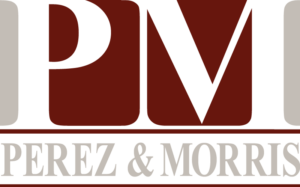The recently revised Prop 65 regulations did no favors for consumer product manufacturers and distributors, especially the new internet and catalog warning requirements for goods sold to California consumers. But businesses who have already fallen prey to Prop 65 “bounty hunter” plaintiffs may be able to sidestep the new regulations altogether by relying on provisions in their prior Consent Judgments.
Proposition 65 Then and Now
In 1986, California voters overwhelmingly approved Proposition 65, a ballot initiative statute labeled the “Safe Drinking Water and Toxic Enforcement Act of 1986.” The official title of the measure read: “Restrictions on Toxic Discharge Into Drinking Water; Requirement of Notice to Persons’ Exposure to Toxics.” Despite having little idea what was written in the fine print, the measure was approved 63% to 37% by voters who were naturally in favor of safe drinking water and opposed to toxic substance exposure. But deep in the legalese text of Prop 65 lurked several provisions providing for Prop 65 enforcement by private parties “in the public interest.” Prop 65 supporters praised the initiative as “more than just a ‘get tough’ law,” but also an “innovative legal mechanism” for toxics regulation using “direct enforcement.”
Direct enforcement indeed. A cottage industry of “citizen enforcers” and their law firms sprang up almost overnight. And while some of the early enforcement actions addressed real toxic water and consumer product exposures, Prop 65 soon became the main weapon to prosecute often frivolous suits against unwary makers and sellers of virtually all types of products.
With nearly 900 carcinogens or reproductive toxicants to choose from, one would think enforcement actions filed in California courts involve a wide array of Prop 65 chemicals. Not so. For years, such actions have involved remarkably few chemicals, and it is not because the products which might contain these chemicals dominate the consumer product landscape. The real reason, it turns out, is that the products which can contain such chemicals are easy to identify, inexpensive to test for, and have a high likelihood of a positive test result. In this way, the “citizen enforcers” and their counsel have learned to maximize their return on investment.
And what a lucrative investment it has been. In 2018 alone, there was a total of 818 out-of-court and court-approved Prop 65 settlements generating over $5.5M in penalties, with 75% of those penalties or $4.125M going to the State and the remaining 25% or $1.375M going to “private enforcers.” (See, Health & Safety Code § 25249.12.) These settlements also generated nearly $32M in attorneys’ fees and costs, making an average settlement worth just over $39,000 to the
prosecuting law firm. Of these 818 enforcement actions, the far and away great majority of them identified phthalates DINP and DEHP and lead [nearly always in the form of brass] found in a dizzying array of products from siphon pump hoses to travel pill cases, shower curtain liners, and brass cavalry bugles to name just a few. Not unlike asbestos litigation, which has, over time, created an ever-expanding ring of potential targets, so too has the Prop 65 universe of makers and sellers of products which have only trace amounts of listed chemicals – and may even be used infrequently – thereby making it virtually impossible for a person to experience chemical exposure sufficient to require a warning. Yet the enforcement actions keep coming.
Proposition 65 Settlements — The Rise of Consent Judgments
The great majority of Prop 65 enforcement actions are resolved by way of settlement in which the product manufacturer/seller agrees to reformulate the product to reduce or eliminate the presence of a listed chemical and/or provide a suitable chemical-specific warning. Most such settlements are reduced to a Consent Judgment that is reviewed by the Court and filed as a final judgment. From that moment forward, Prop 65 compliance is governed by the terms of the Consent Judgment, including the content and format of warnings.
As an example, the firearms and ammunition industry became embroiled in a Prop 65 enforcement action surrounding the use of lead – a listed reproductive toxicant at the time – in hunting and shooting sports products. The Consent Judgment filed in Alameda County Superior Court in July 1996 included a specific lead warning all signatories were required to use from that day forward. This warning reads:
Discharging firearms in poorly ventilated areas, cleaning firearms, or handling ammunition may result in exposure to lead and other substances known to cause birth defects, reproductive harm, and other serious physical injury. Have adequate ventilation at all times. Wash hands thoroughly after exposure.
Though it was negotiated as part of the enforcement action’s resolution, this Consent Judgment warning was very different from the Prop 65-compliant lead warning in use at the time for consumer products. (See, former 27 CCR § 25603.2, subd. (a).) This warning read:
WARNING: This product contains a chemical known to the State of California to cause birth defects or other reproductive harm.
Regardless, because the Consent Judgment adopted warning language negotiated by the parties to that action, which was then approved by the Court and entered as a final judgment, the Consent Judgment language controlled, and has continued to control in the intervening 20 years.
Consent Judgments often contain other provisions regarding the form, content and use of Prop 65 warnings. For example, the firearms/ammunition Consent Judgment allowed certain warnings to be included in instruction manuals or on box end flaps, a practice disapproved by The Office of Environmental Health Hazard Assessment (OEHHA), the state agency charged with administering Prop 65.
Recent Changes to Prop 65 — New Rules, New Liability
In November 2015, OEHHA began the administrative process to change existing rules relating to Title 27, Article 6 of the California Code of Regulations – Prop 65’s “Clear and Reasonable Warnings.” The revised regulations became effective on August 30, 2018, and they were monumental for two main reasons. First, the format of Prop 65-compliant “safe harbor” warnings changed to incorporate more information, a warning symbol, and a required chemical name. For example, the new “safe harbor” warning for lead became:
WARNING: This product can expose you to chemicals including lead, which are known to the State of California to cause cancer and birth defects or other reproductive harm. For more information go to www.P65Warnings.ca.gov.
In addition, a new type of warning – a “short form” version – was adopted and requires only the end point(s) of concern – e.g. cancer, reproductive harm or both – and the Prop 65 website address, but no specific chemical name. The new short-form warning for lead reads:
WARNING: Cancer and Reproductive Harm – www.P65Warnings.ca.gov.
Even more significant, though, was the
change to require Prop 65 compliant warnings, whether safe harbor warnings or short-form warnings, for internet and catalog sales to California consumers. Given the explosive growth of e-commerce over the last decade, this new requirement constituted a seismic shift in the reach of Prop 65 and with it the potential liability of those in the e-commerce chain. Now, for example, any online retailer who sells to California consumers must have a Prop 65-compliant warning visible on the product page for covered products being sold into California.
The New Rules And Consent Judgment Signatories — The Applicable Prop 65 Provisions
Title 27, Article 6 of California Code of Regulations governs “Clear and Reasonable Warnings” under Prop 65. In Subarticle 1, Section 25600, subdivision (e) addresses prior Consent Judgments directly:
“A person that is a party to a court-ordered settlement or final judgment establishing a warning method or content is deemed to be providing a ‘clear and reasonable’ warning for that exposure for purposes of this article [Art. 6], if the warning complies with the order or judgment.” (Emphasis added.)
Article 6, Subarticle 2, Sections 25601 through 25603 govern “Safe Harbor Methods and Content.” There, Section 25601 addresses “Safe Harbor Clear and Reasonable Warnings – Methods and Content,” while Section 25602 dictates “Consumer Product Exposure Warnings – Methods of Transmission,” including product warning labels, internet purchases and catalog purchases. (See, 27 CCR § 25602, subd. (a) to (c).) Finally, Section 25603 governs “Consumer Product Exposure Warnings – Content” and sets forth language to be used in code-compliant safe harbor warnings and short-form warnings. (See, 27 CCR § 25602, subd. (a) and (b).)
As is evident, the new regulatory scheme sets forth the entirety of the rules relating to the method and content of Prop 65 warnings, including what compliant warnings are to look like, when they are to be displayed and, most importantly, where they are to be displayed – shelf signs/tags, posted signs, product-specific warnings, and now internet product display pages and catalog pages. (See, 27 CCR § 25602, subd. (a) to (c).)
Though it has not formally weighed-in on the precise question, OEHHA seems to agree with this conclusion. In its “Final Statement of Reasons” regarding new Article 6 regulations for “clear and reasonable warnings” (dated September 2, 2016), OEHHA included the following response to a comment (Comment 30) regarding the proposed new Section 25600, subdivision (e): “As stated previously, subsection 25600(f) (subsequently renumbered as subsection (e)) provides that parties to court-ordered settlements are not required to comply with the OEHHA regulations. OEHHA cannot change the terms of a court order or settlement by regulation.” (OEHHA, Final Statement of Reasons at pg. 26 of 273 [emphasis added].)
Moreover, in its August 2017 “Proposition 65 Clear and Reasonable Warnings Questions and Answers for Businesses,” OEHHA responded to the question “Does a product covered by a court-approved warning require a new warning?” as follows: “A consumer product covered by a court-approved settlement can continue to use any warning methods and content contained in that settlement.” (Emphasis added.)
Thus, it appears OEHHA interprets new Section 25600, subdivision (e) to allow for the terms of prior court-approved settlements and judgments to supersede altogether the new regulations as to warning methods and content.
Conclusion: The New Internet and Catalog Warning Rules Do Not Apply to Prior Consent Judgment Signatories For Those Products Previously At Issue
Title 27 CCR Section 25600, subdivision (e) sets forth the obligations of signatories to prior Prop 65 consent judgments and/or court-ordered settlements. It makes clear that if such a judgment or settlement establishes a warning method or content for Prop 65 warnings, the signatories using such methods or content are deemed to provide “clear and reasonable” warnings under Article 6 [“Clear and Reasonable Warnings”]. The key, of course, is whether a prior Consent Judgment’s provisions do indeed establish warning methods and/or content. Most do.
Title 27 CCR sections 25602 [“Consumer Product Warnings – Methods of Transmission”] and 25603 [“Consumer Product Warnings – Content”] are contained in Article 6. Section 25602 includes the new internet and catalog warning requirements, and Section 25603 includes the new warning formats, including “short-form” warnings. Therefore, it is clear that parties to an existing consent judgment or court-ordered settlement may continue to use both the warning method and warning content included in those documents, even if they differ greatly from the new warning conventions. Moreover, it is reasonable to conclude that those warning methods and content requirements do not now include the new internet and/or catalog warning requirements. Finally, as indicated above, OEHHA has expressed no contrary position; instead, OEHHA’s guidance seems to confirm the view that prior consent judgments and/or court-approved settlements trump the new regulations in their entirety.
Accordingly, if a prior Consent Judgment includes terms dictating the method and content of Prop 65 warnings, then they will be deemed “clear and reasonable” under the new Article 6 by virtue of Section 25600, subdivision (e), and the manufacturers/distributors/retailers who are parties to that Consent Judgment can ignore the new internet/catalog warning requirements, at least for those products previously at issue. For new or different products not expressly covered by the prior Consent Judgment, however, the recent Prop 65 amendments would control.





 Author:
Author: 
 Author:
Author: 
